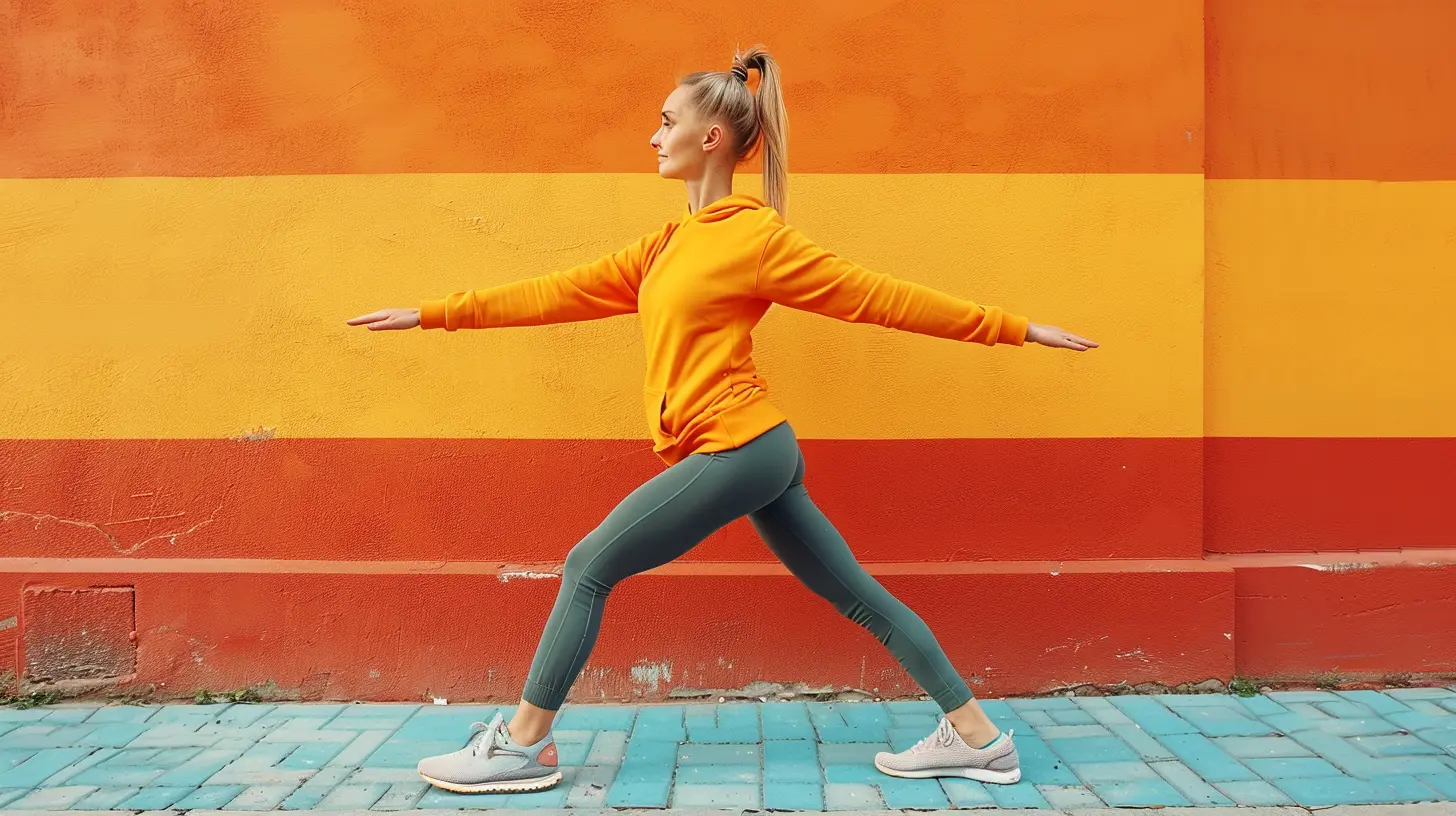How to Improve Your Posture Through Exercise
19 July 2025
Good posture is more than just standing tall—it’s about keeping your body aligned and balanced to prevent pain, stiffness, and potential injuries. With so many of us spending hours hunched over desks, scrolling on our phones, or slumping on the couch, poor posture has become a common problem.
The good news? You can fix it! Exercise is one of the most effective ways to improve your posture and retrain your muscles to support your body correctly. In this article, we’ll break down the best exercises to straighten you up, boost your confidence, and keep pain at bay.

Why Is Good Posture Important?
Before we dive into the workout routines, let’s talk about why posture even matters.1. Reduces Back and Neck Pain – Slouching puts extra strain on your spine and muscles, causing discomfort over time.
2. Improves Breathing – Proper posture allows your lungs to expand fully, improving oxygen intake.
3. Boosts Confidence – Standing tall naturally makes you look and feel more confident.
4. Enhances Digestion – Slouching can compress your abdominal organs, leading to digestive issues.
5. Prevents Injuries – Correct posture reduces stress on your joints and muscles, lowering the risk of injury.
By incorporating posture-improving exercises into your daily routine, you’ll not only stand taller but feel better overall.

How Exercise Helps Improve Posture
Your posture is controlled by a combination of muscles, especially your core, back, shoulders, and neck. When these muscles are weak or imbalanced, your body compensates—resulting in poor posture.Posture-improving exercises work by:
✅ Strengthening weak muscles
✅ Stretching tight muscles
✅ Encouraging proper alignment
✅ Increasing body awareness
Now, let’s get into the best exercises to help you stand tall and stay pain-free.

Best Exercises to Improve Your Posture
1. Plank
The plank is a powerhouse move that strengthens your core, shoulders, and back—essential for maintaining good posture.How to do it:
1. Get into a forearm or high plank position.
2. Keep your body in a straight line from head to heels.
3. Engage your core and hold for 30–60 seconds.
4. Repeat 2-3 times.
Why it works: A strong core is the foundation of good posture, preventing slouching and spinal misalignment.
2. Wall Angels
Wall angels help improve shoulder mobility and strengthen postural muscles.How to do it:
1. Stand with your back against a wall, feet a few inches away.
2. Press your lower back, shoulders, and head against the wall.
3. Raise your arms into a "goalpost" position.
4. Slowly move your arms up and down like making a snow angel.
5. Repeat for 10-12 reps.
Why it works: This move corrects rounded shoulders and promotes better upper-back posture.
3. Cat-Cow Stretch
This yoga-inspired movement loosens a stiff spine and encourages proper spinal alignment.How to do it:
1. Get on all fours with your hands under your shoulders and knees under your hips.
2. Inhale, arch your back, and lift your head (Cow Pose).
3. Exhale, round your spine, and tuck your chin to your chest (Cat Pose).
4. Repeat for 10-12 reps.
Why it works: It keeps your spine flexible and counteracts the effects of prolonged sitting.
4. Chin Tucks
Tech neck, anyone? Chin tucks strengthen the neck and realign your head with your spine.How to do it:
1. Sit or stand tall.
2. Pull your chin straight back as if making a "double chin."
3. Hold for 5 seconds.
4. Repeat 10-12 times.
Why it works: It counteracts the forward head posture caused by hours of screen time.
5. Glute Bridges
Weak glutes contribute to poor posture by causing an anterior pelvic tilt. Glute bridges help strengthen your posterior chain.How to do it:
1. Lie on your back, knees bent, feet flat on the ground.
2. Press through your heels and lift your hips towards the ceiling.
3. Squeeze your glutes at the top, then lower slowly.
4. Repeat for 12-15 reps.
Why it works: A strong lower back and glutes prevent excessive lower-back arching, improving spinal alignment.
6. Reverse Rows
Strong upper-back muscles keep your shoulders from rounding forward. Reverse rows are great for building postural strength.How to do it:
1. Use a bar or suspension trainer at waist height.
2. Hang underneath it with straight arms, feet on the floor.
3. Pull your chest towards the bar, keeping your body straight.
4. Lower back down slowly and repeat for 10-12 reps.
Why it works: This move strengthens the upper back, counteracting poor desk posture.
7. Seated Spinal Twist
A tight spine can contribute to bad posture. Twisting movements help loosen things up.How to do it:
1. Sit cross-legged or with legs extended.
2. Place one hand behind you and the other on the opposite knee.
3. Twist gently towards your back hand, holding for 15-20 seconds per side.
4. Repeat 2-3 times per side.
Why it works: It increases spinal mobility and relieves tension from prolonged sitting.

Daily Habits for Better Posture
In addition to exercise, small daily changes can make a big difference in your posture:- Sit Properly: Keep both feet flat on the floor and your back straight.
- Take Breaks: Stand up and stretch every 30-60 minutes if you work at a desk.
- Adjust Your Screen: Your computer monitor should be at eye level to avoid hunching forward.
- Strengthen Your Core: A weak core often leads to slouching—incorporate core exercises regularly.
- Sleep Smart: Use a supportive pillow and mattress to maintain spinal alignment.
How Long Does It Take to Improve Posture?
It depends on how consistent you are! With daily effort, you may start noticing improvements in a few weeks. However, lasting posture changes take time—so be patient. Stay consistent with these exercises and posture-friendly habits, and you'll see (and feel) the difference.
Final Thoughts
Improving your posture isn’t about forcing yourself to sit up straight for hours—it’s about strengthening your body to naturally support better alignment. By incorporating these exercises and healthy habits into your routine, you can say goodbye to back pain and hello to standing tall with confidence!all images in this post were generated using AI tools
Category:
ExerciseAuthor:

Sophia Wyatt
Discussion
rate this article
1 comments
Zia Heath
Thank you for this informative article! I appreciate the practical tips on exercises to enhance posture. It’s a reminder of how important our body alignment is for overall health. Looking forward to trying these suggestions!
July 29, 2025 at 5:04 PM

Sophia Wyatt
Thank you for your kind words! I'm glad you found the tips helpful. Wishing you the best on your journey to better posture!


